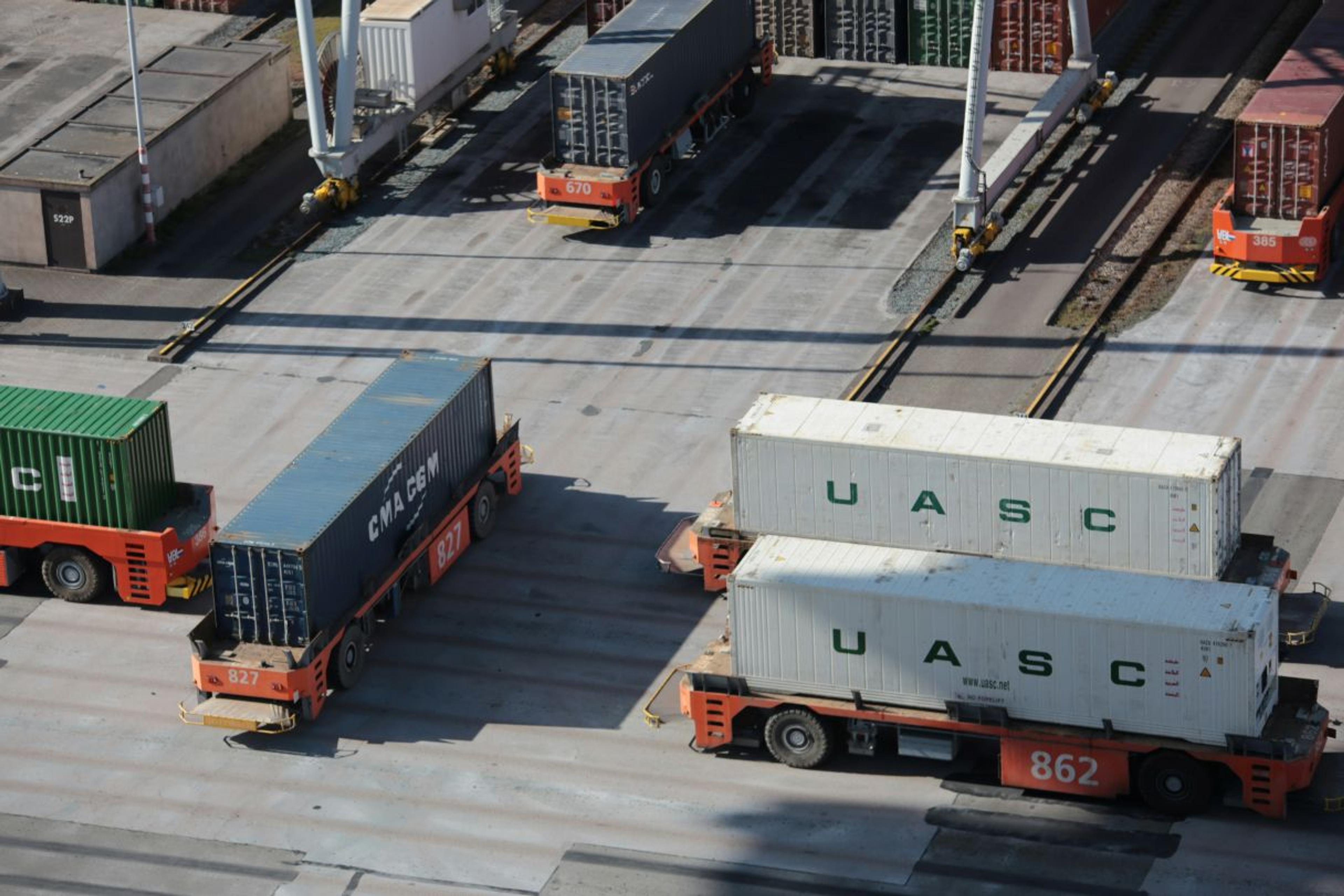How to Spot and Avoid Hidden Fees in Your Freight Quote
Start by treating a base quote as the starting point, not the final bill. Many carriers leave out accessorials, surcharges, and post-inspection adjustments that can raise your final costs. Common triggers include reweighs, reclassifications, DIM changes, and location-based services like lift gate or residential delivery.

Quote red flags: how to spot missing services and vague rate notes
A quick scan of rate notes can reveal costly omissions before you tender a shipment. Look for blank accessorial fields, placeholder dimensions, and rounded weights that often hide later charges.
If a non-dock pickup or delivery lacks a lift gate selection, carriers will add the service later. That change increases costs and creates an unexpected charge on the invoice.
Weights that end in 0 or 5 and “to be confirmed” dimensions
Rounded weights or TBD dimensions are common risk markers. Carriers reweigh and reclass often; 17% of such shipments face a reweigh fee averaging $206–$288.
BOL mismatches that trigger post-delivery adjustments
Typos or changes to weight, class, or addresses on the bill of lading can prompt an adjustment after delivery. Non-rate-impacting edits may be allowed, but rate fields must match the physical load.
- Scan for missing accessorials at non-dock locations.
- Treat “TBD” dims and rounded weights as estimates that invite reweighs.
- Validate the bill of lading and confirm contact details before pickup.
| Red Flag | Why It Matters | Typical Impact |
|---|---|---|
| Missing lift gate | Non-dock address not flagged | Moderate extra charges |
| Rounded weight / TBD dims | Estimates trigger reweigh | High: $206–$288 avg |
| BOL mismatch | Rate fields differ from load | Billing adjustment |
| Vague rate notes | Unclear accessorial inclusion | Extra costs after delivery |
Prevent costly adjustments with precise shipment data
A clear, repeatable process for capturing shipment specs stops most post-delivery adjustments. Small errors on weight, dimensions, or class trigger reweighs and reclass actions that drive up costs. Verify details before pickup to keep the invoice aligned with estimates.
Get verified weight without a scale
When you lack a certified scale, use pallet tare weights plus counted unit weights or comparative weighing on a warehouse floor scale. These methods cut the risk of a reweigh penalty, which averages $206–$288.
Measure with packaging included
Always include pallets, overhang, and protection in your dimensions. DIM and oversize triggers are based on total packed size, so small increases add big charges.
Match product description to the NMFC
Assign the correct NMFC code and class to your goods so the carrier inspects against the right entry. Misclassification leads to reclass adjustments and higher costs.
- Use a quoting tool to populate the BOL from precise specs and reduce clerical mismatch on lading documents.
- Re-quote before pickup for any rate-impacting changes to avoid a post-delivery adjustment.
- Keep photos and records of weight and dimensions to dispute incorrect charges later.

Location details that change your carrier rate
Small differences in delivery site type can shift carrier pricing quickly. Verify the exact delivery location before you book so the carrier lists the proper services on the BOL.
Always mark a stop as residential when it is a home address. Mislabeling a residence as a business leads to later corrections and extra charges.
Dock-to-dock vs. lift gate service at pickup and delivery
Check for a loading dock at both ends. If there is no dock, request lift gate service up front. A lift adds time and a separate charge but prevents delays and redelivery.
- Verify delivery location type to avoid post-dispatch corrections.
- Confirm dock availability so carriers bring the needed equipment.
- Note limited-access requirements like gates, hospitals, or campus rules.
- Capture contact names, appointment windows, and loading notes on the BOL.
| Location Type | Required Service | Typical Impact |
|---|---|---|
| Commercial dock | Dock-to-dock loading | Lowest additional costs |
| Residential delivery | Residential service designation | Moderate added charges |
| No dock / curbside | Lift gate or lift assistance | Moderate to high depending on loading |
| Limited access (hospital/school) | Appointment + special handling | Higher time-on-site costs |
Pro tip: Train teams to validate addresses and capture loading equipment needs. Clear location details let carriers arrive prepared and keep shipping costs predictable.
Budget control tactics: audit, optimize, and negotiate
Control your shipping budget by making invoice audits a routine step after every delivery. Regular checks stop small adjustments from piling up into large expenses.
Start with a line‑by‑line audit. Compare each invoice to the original quote and flag any unexpected adjustment or accessorial. Ask the carrier for supporting documentation if amounts differ.
- Audit: Compare invoice vs. agreement and request proof for any adjustment or extra charge.
- Analyze: Use a tracking tool or spreadsheet to trend charges by lane, carrier, and shipment type.
- Optimize packaging: Right‑size boxes and pallet configuration to lower DIM exposure and oversize costs.
- Negotiate: Seek bundled rates, flat fees, or waived lift gate and appointment surcharges to stabilize your rate.
Formalize a dispute process with timelines and required evidence. Calibrate internal service policies so free or fast delivery promises don’t force premium carrier charges.
| Action | Immediate Benefit | Outcome |
|---|---|---|
| Invoice audit | Spot incorrect adjustments | Recover expenses quickly |
| Charge trending | Identify repeat drivers | Target negotiations and process fixes |
| Packaging playbook | Reduce DIM & oversize | Lower shipping costs per shipment |
- Deploy a reconciliation tool to speed audits and preserve margin.
- Run monthly reviews to inform carrier scorecards and bid events.
- Document wins and vendor commitments to lock in cost reductions.
Conclusion
A simple, repeatable checklist is the fastest way to stop small adjustments from becoming big costs. Use verified weights and measured dimensions with packaging included to reduce reweighs and reclass actions. Select every required service up front so the carrier lists them on the BOL.
Audit invoices line by line. Track recurring line items and analyze which charges and adjustments appear most often. Right‑size packaging to limit DIM and oversize exposure and protect your margin on each shipment.
Keep location details visible for delivery—dock status, residential stops, and appointment needs. Negotiate bundled services or waived fees to make rates more predictable.
Act now: apply this checklist on your next shipment to cut surprise charges and defend the cost of your goods against avoidable fees.
FAQ
What are the most common additional charges that increase the final shipment cost?
Carriers often add accessorials such as lift gate, inside delivery, limited access, residential delivery fees, and appointment charges. Fuel surcharges and peak season premiums also push costs higher. Check the carrier's tariff and ask for line-item pricing so you see each possible add-on up front.
How do residential pickups or deliveries affect my rate?
Delivering to a home or non-commercial address usually triggers residential fees because drivers face extra handling and time. Confirm the delivery location type—business with a dock versus residential—to ensure the carrier applies the correct charge and avoid surprise billing.
Why can weights and dimensions change the invoice after pickup?
Carriers may reweigh or remeasure shipments on their scales. If actual weight or DIM (dimensional) weight differs from what you provided, they adjust the billing. Use verified weight methods and include packaging in your dimensions to reduce post-delivery adjustments.
What does reclass or NMFC code adjustment mean for my shipment?
If a carrier assigns a different NMFC freight class than you declared, they can reclass and bill the higher rate. Match your product description to the correct NMFC code and document commodity details to minimize reclass fees.
How can I detect vague or incomplete rate notes on a carrier estimate?
Watch for quotes that say “accessorials not included,” list weights as “to be confirmed,” or omit lift gate and residential indicators. Request a detailed breakdown—base rate, all accessorials, fuel and peak surcharges, and any conditions tied to the price.
What red flags indicate a quote might change after pickup?
Red flags include weights ending in 0 or 5 (suggesting estimates), “subject to verification” language, and missing service indicators for locations without docks. Also check the BOL and quote for mismatched descriptions that could trigger adjustments.
How do appointment-required and missed pickup fees work?
If a pickup or delivery needs an appointment and it’s not scheduled or missed, carriers often charge additional fees for rescheduling or waiting time. Confirm appointment windows and add contact instructions on the paperwork to avoid those charges.
Can packaging and palletizing reduce extra charges?
Yes. Proper packaging and pallet patterns can lower DIM weight and avoid oversize or cubic capacity penalties. Use uniform pallets, secure loads, and pack to industry best practices to reduce handling and size-related fees.
How should I verify weight without access to a certified truck scale?
Use shop scales, a certified floor scale, or ask the carrier for a pre-pickup verification service. Document the weight with photos or scale tickets and include that proof on the Bill of Lading to contest discrepancies later.
What steps should I take to audit invoices and control costs?
Compare every invoice line item to the original estimate and BOL. Track recurring accessorials by lane and carrier to spot patterns. Dispute unexplained charges immediately and negotiate fee waivers or bundled services for frequent lanes.
How do fuel and peak season surcharges get calculated?
Fuel surcharges typically follow a published percentage tied to national diesel indexes. Peak season surcharges are temporary premiums carriers apply during demand spikes. Ask carriers for their surcharge matrices and include those terms in rate negotiations.
What should go on the Bill of Lading to prevent post-delivery adjustments?
Include accurate product descriptions, declared weight and dimensions (with packaging), pickup and delivery location types, appointment requirements, and contact names. Clear documentation reduces carrier disputes and strengthens your case if reweighs occur.
How can I negotiate better terms to avoid surprise charges?
Request bundled pricing that includes common accessorials, seek guaranteed appointment windows, and ask for fee caps or waivers on recurring add-ons. Use shipment data to demonstrate volume and negotiate lane-specific concessions with carriers like UPS Freight, FedEx Freight, or local LTL providers.
Are oversize and cubic capacity fees preventable?
Often yes. Optimize load plans, break large items into smaller shipments when possible, and confirm packaging dimensions. If an item is inherently oversized, disclose it in the quote and ask the carrier for a written acknowledgment of the size-based rate.
